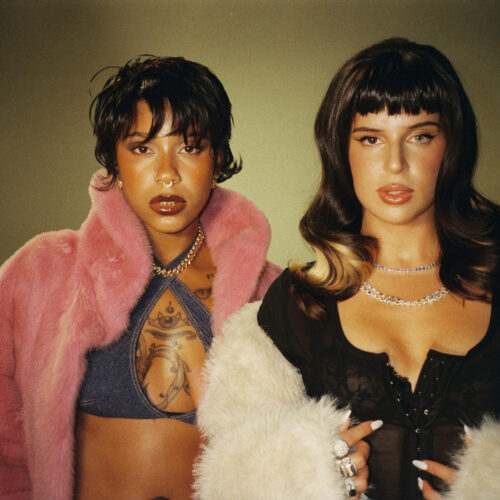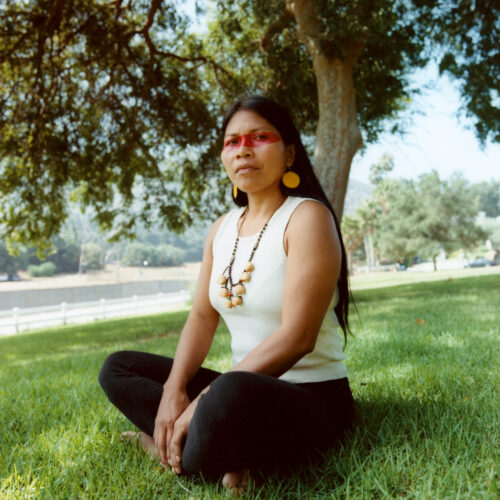Growing up, I often took trips to my maternal homeland Michoacán, Mexico. In this central Mexican state, Jaripeo, a form of bull riding, is ubiquitous. This form of riding first emerged in Mexico during the 16th century. At the time, riders would ride bulls to their death. Today, riders attempt to dominate the bull to submission. Strength and machismo are not the only elements at play, but also spectacle, performance, and glamour.
The word jaripeo, which derives from the Nahuatl word xaripeo, rings synonymous with art which is demonstrated through the music, the symbolic clothing of a jinate, or a crowd dressed in indigenous garb. Women would wear traditional dresses known as enaguas and dance until they could no more.
Jaripeos have for some time made their way past the border. Their style has settled, evolved, and even made a home across many Southern California cities and neighboring states. One thing has not changed: the dress code.
When the dust settles in a jaripeo arena in Southern California, one can see women clutching their cowboy hats with long adorned acrylic nails and boots planted firmly on the ground. Men wear their home state embroidered across their belts or hats. Clothes, sometimes designer, are carefully picked out for the occasion.
In the middle of the arena are the jinates who ride and hold onto bucking bulls until they can’t. These fearless folks hold photos of loved ones in their pockets and hope to live to unfold them. And if they don’t, at least they knew they were always there with them. They also rep their home state on their pants or sometimes wear designs that represent them as a person. Religious insignia is also common.
Jaripeo fashion is a distinctive subculture that carries generations of aesthetic choices, class, and narratives. The wardrobe, which is not a common sight outside the walls of a rodeo, is always finding ways to express the untold stories of the working class, including the young Latine people enjoying what their families before them enjoyed after a long week. Attending one in person sheds light on cultural resilience across state borders.
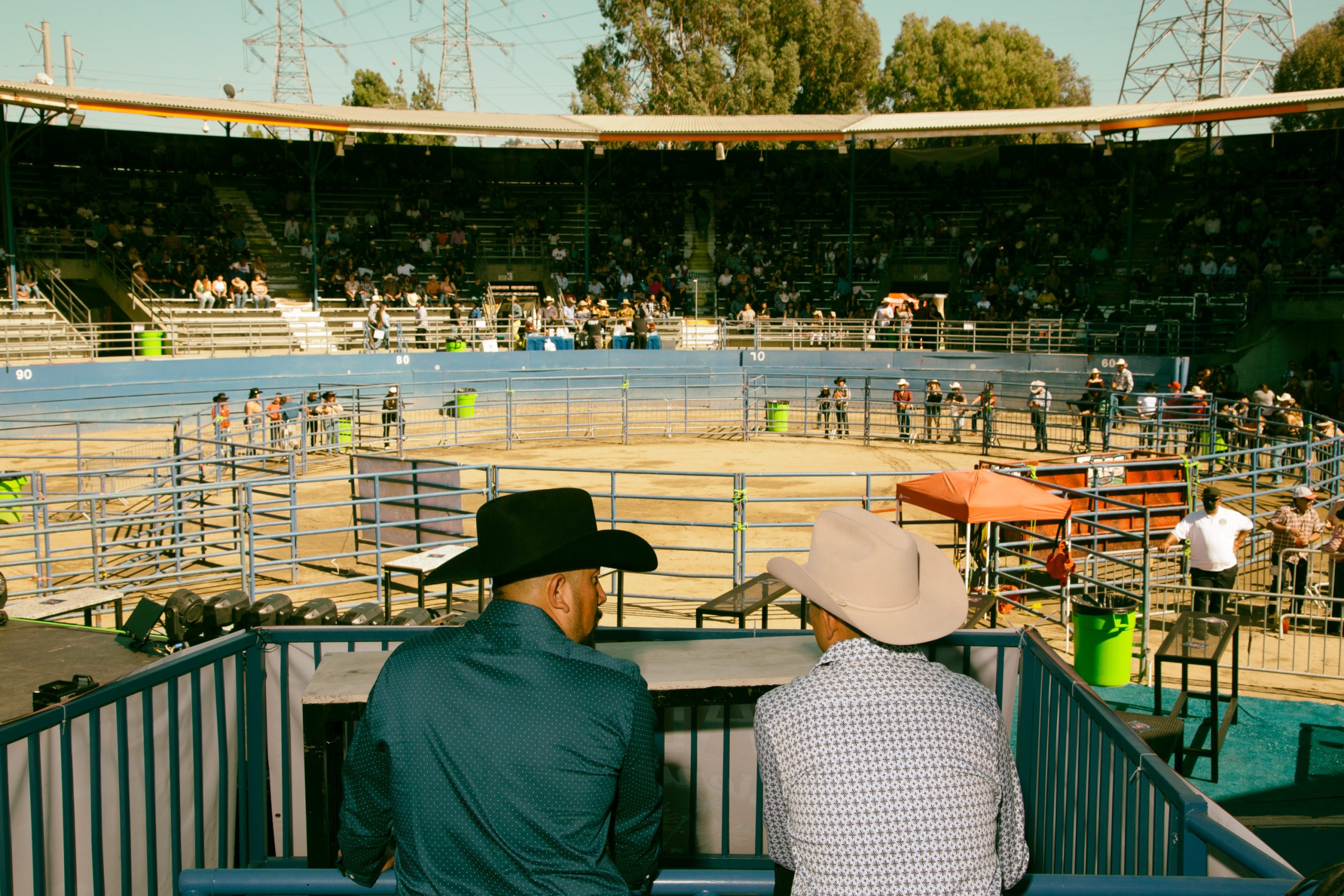
Two men stare out to the 6,000 seat Pico Rivera Sports Arena in Pico Rivera, Calif. on Sunday, Sept. 5, 2021, as attendees slowly start pouring in.
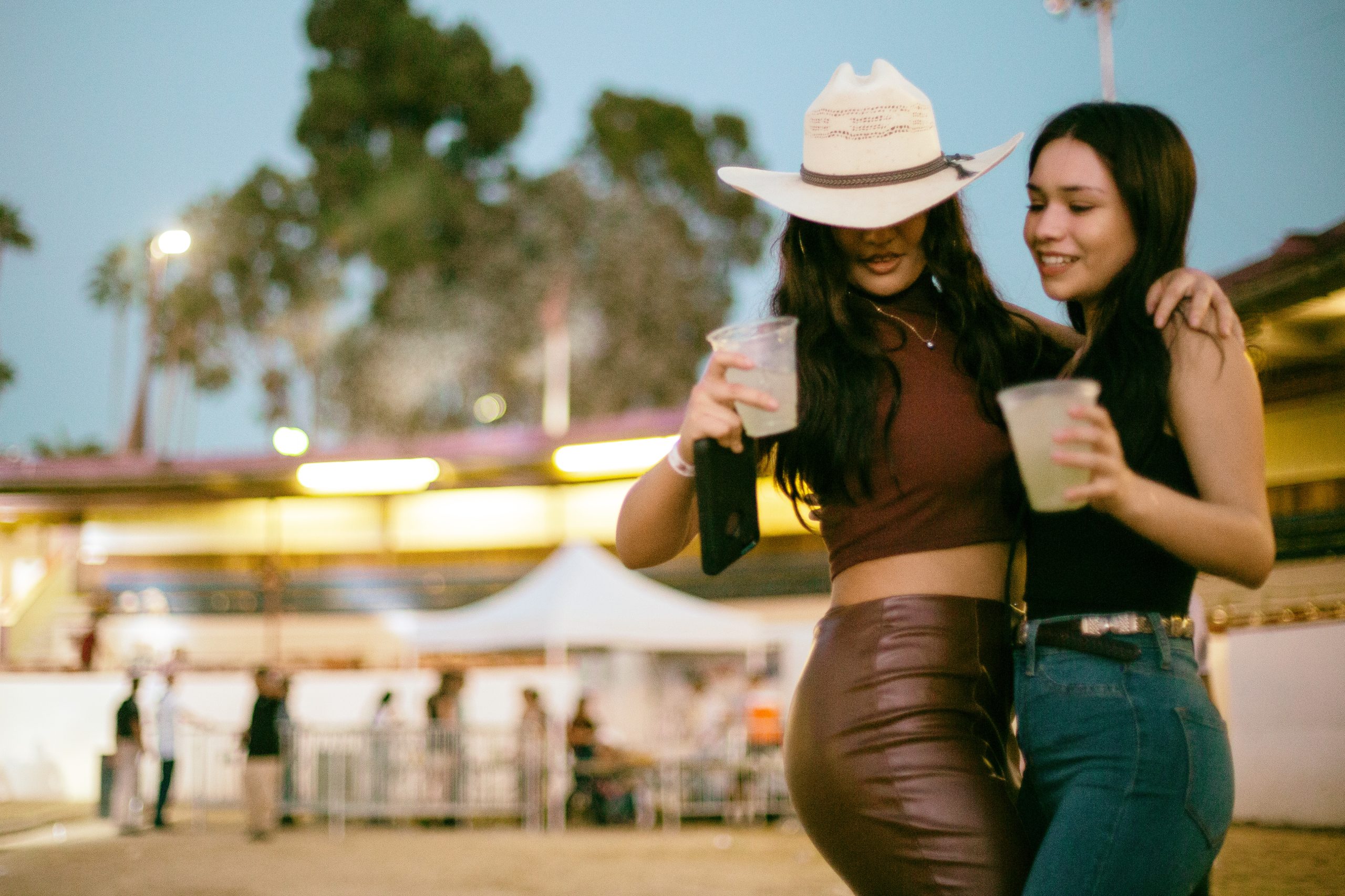
Sisters Aleah Barreto and Kayla Barreto dance together in Santa Barbara, Calif. on Sunday, Oct. 3, 2021. The duo is inside the dirt-paved rodeo of the Earl Warren Showgrounds jaripeo-concert hosted by Eslabón Armado, a regional Mexican group made up of three teenagers. Jaripeo-concerts can go two ways: musicians play while the jinates ride the bulls or play after the bull riding spectacle.
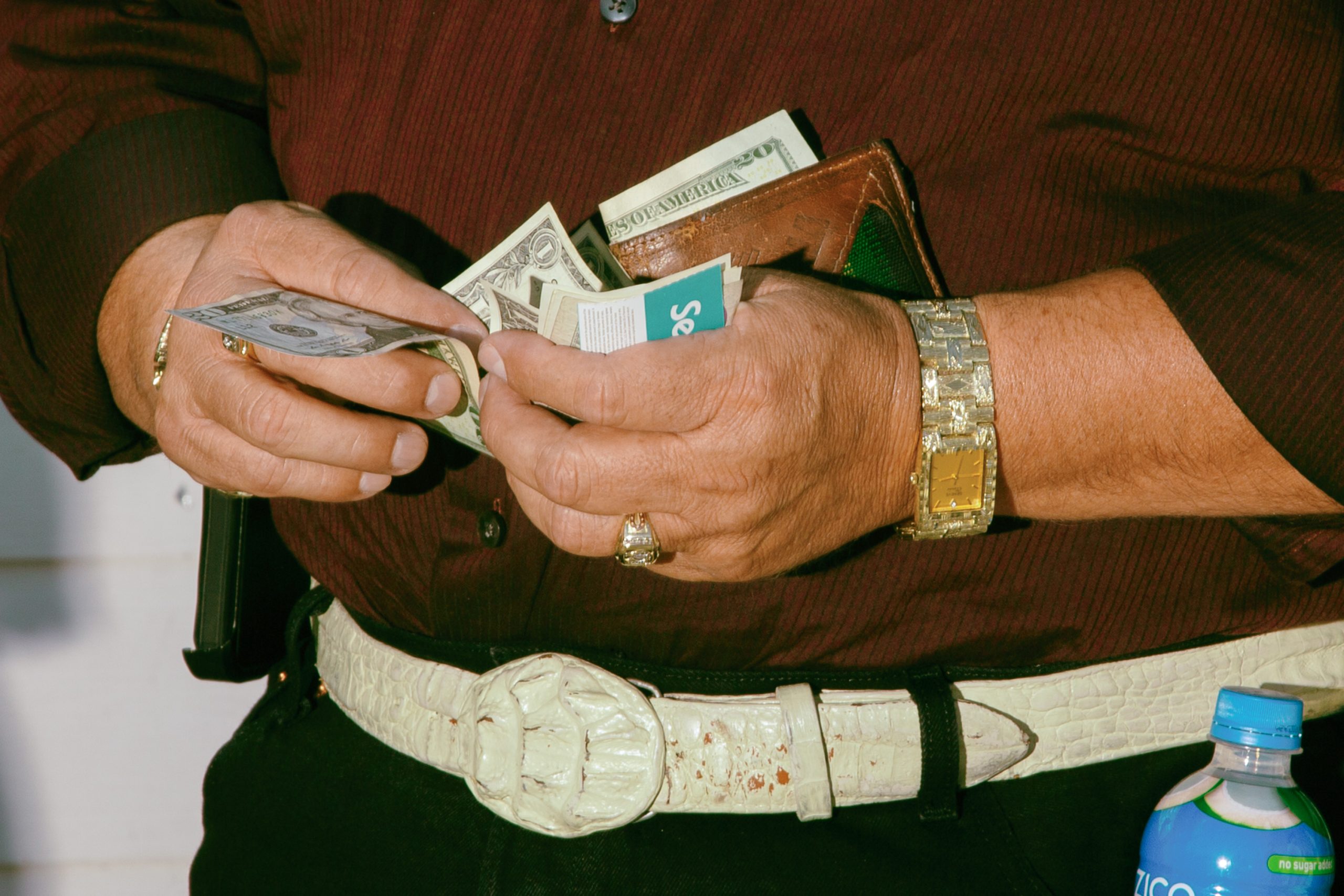
Outside the stadium, an attendee adorned in gold pays a ticket scalper cash for admission to the Pico Rivera Sports Arena jaripeo on Sunday, Sept. 5, 2021.
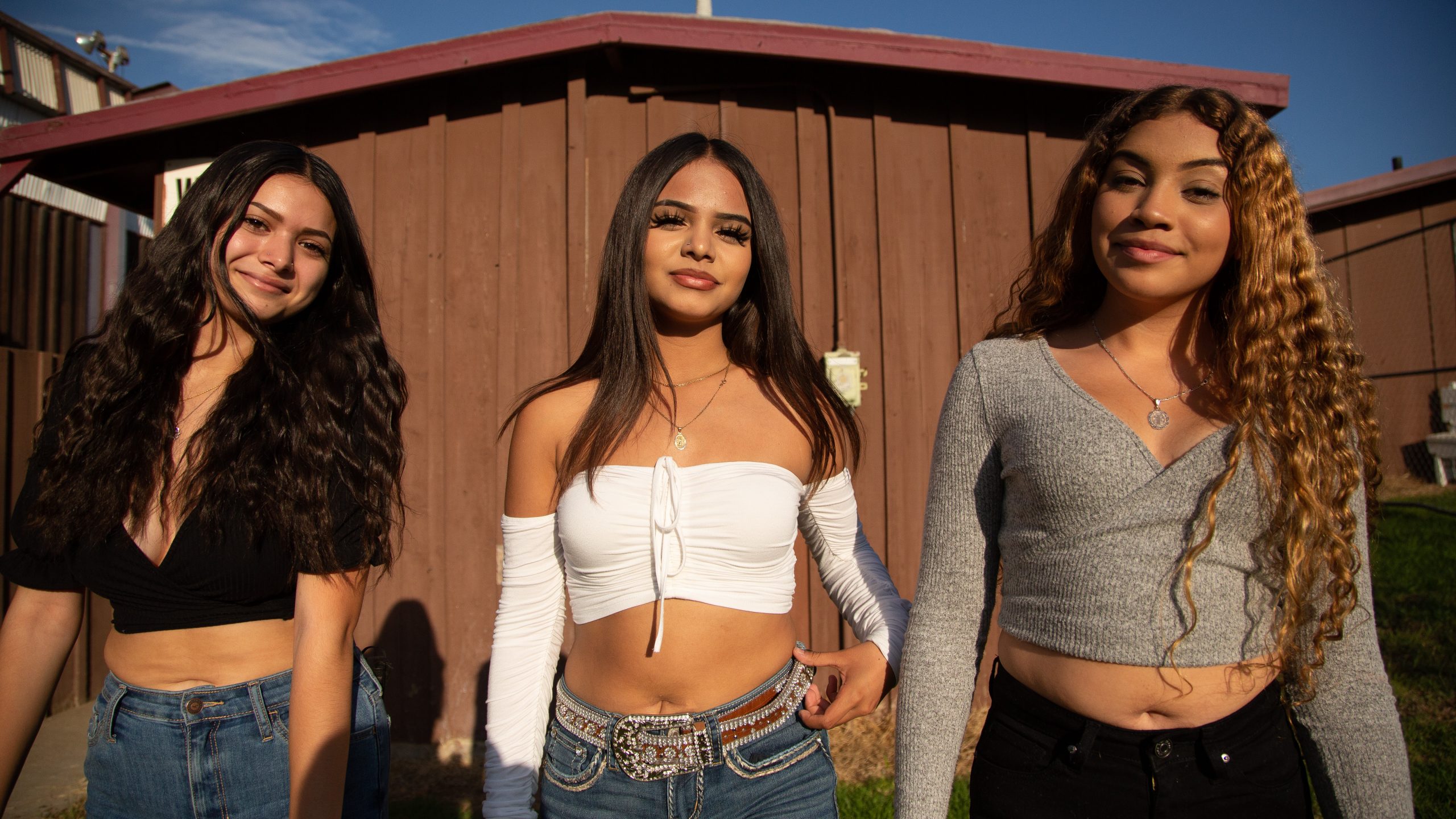
Young fans Tyanna Torres, 14, Yuliana Aguilar, 14, and Kaylanie Barrera visit the Earl Warren Showgrounds in Santa Barbara, Calif. for their first jaripeo-concert, put on by artist Eslabon Armado on Sunday, Oct. 3, 2021.
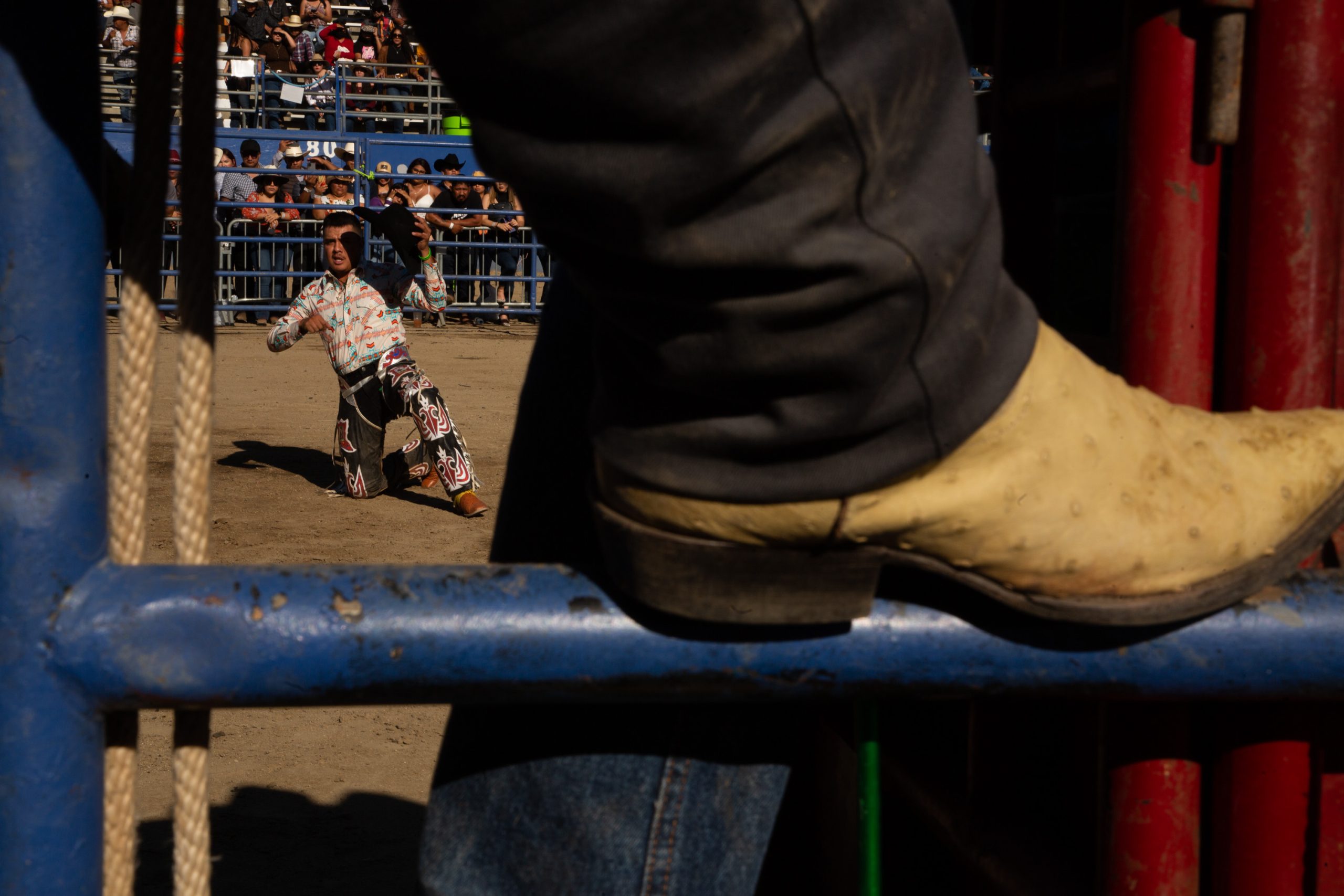
A jinate slowly stands up after he has finished a prayer asking for protection from the skies above before his ride in Pico Rivera, Calif. on Sunday, Sept. 5, 2021.
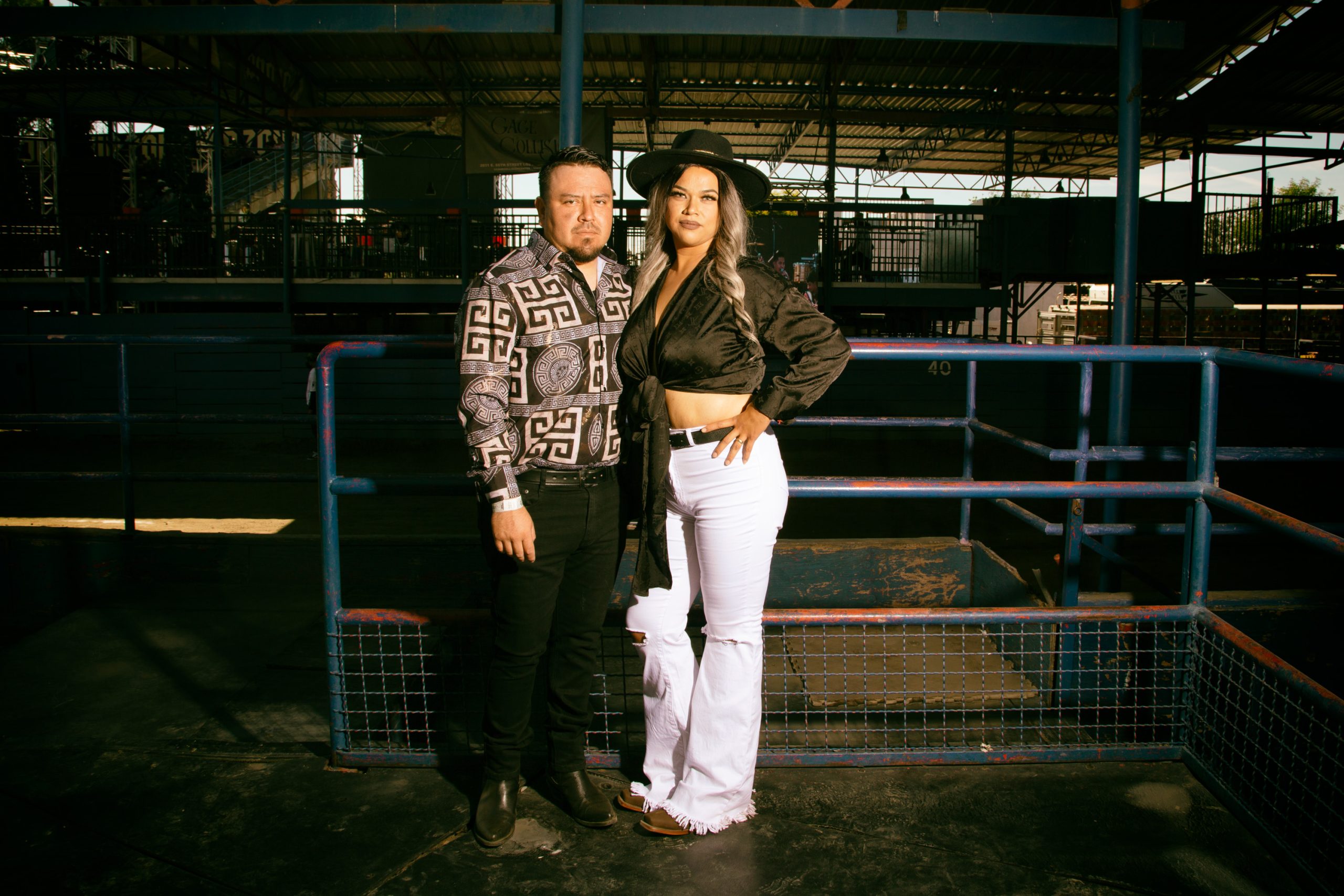
A couple poses for a photo together in the backstage area of the Pico Rivera Sports Arena on Sunday, Sept. 5, 2021. They are both sporting designer items for the event.
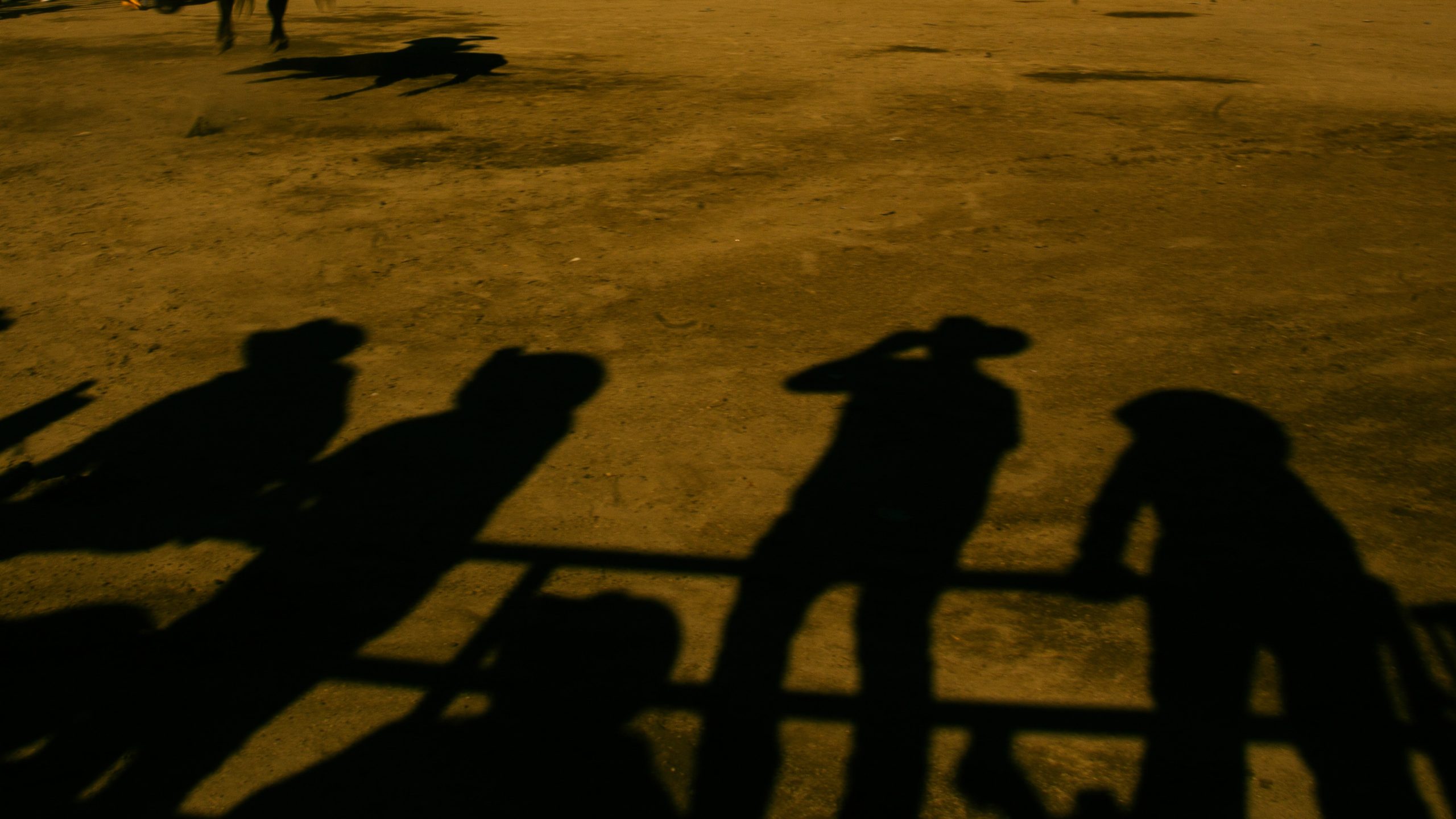
Jinates cast larger-than-life shadows while sitting on a steel fence at the Pico Rivera Sports Arena jaripeo on Sunday, Sept. 5, 2021. The bull riders are waiting to take their mount and are also prepared to help others when danger is near.
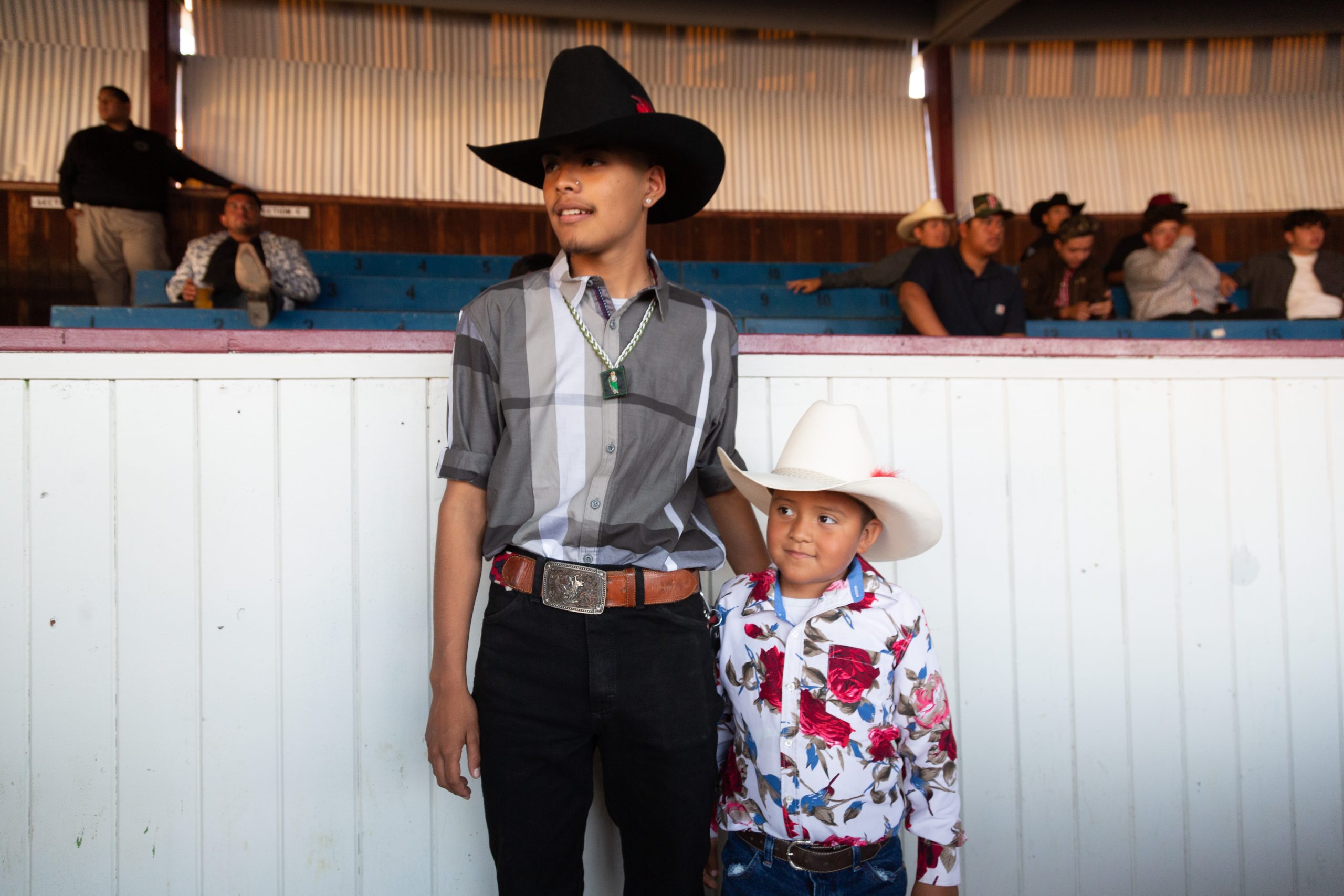
Brothers Ezequiel Robles and Mauricio Figeroa pose after the Earl Warren Showgrounds jaripeo on Sunday, Oct. 3, 2021, while waiting for a follow-up concert to begin on. Robles wears a necklace that depicts St. Judas, a symbol for many working-class Latinos. For believers, the saint brings good fortune and help in difficult situations.
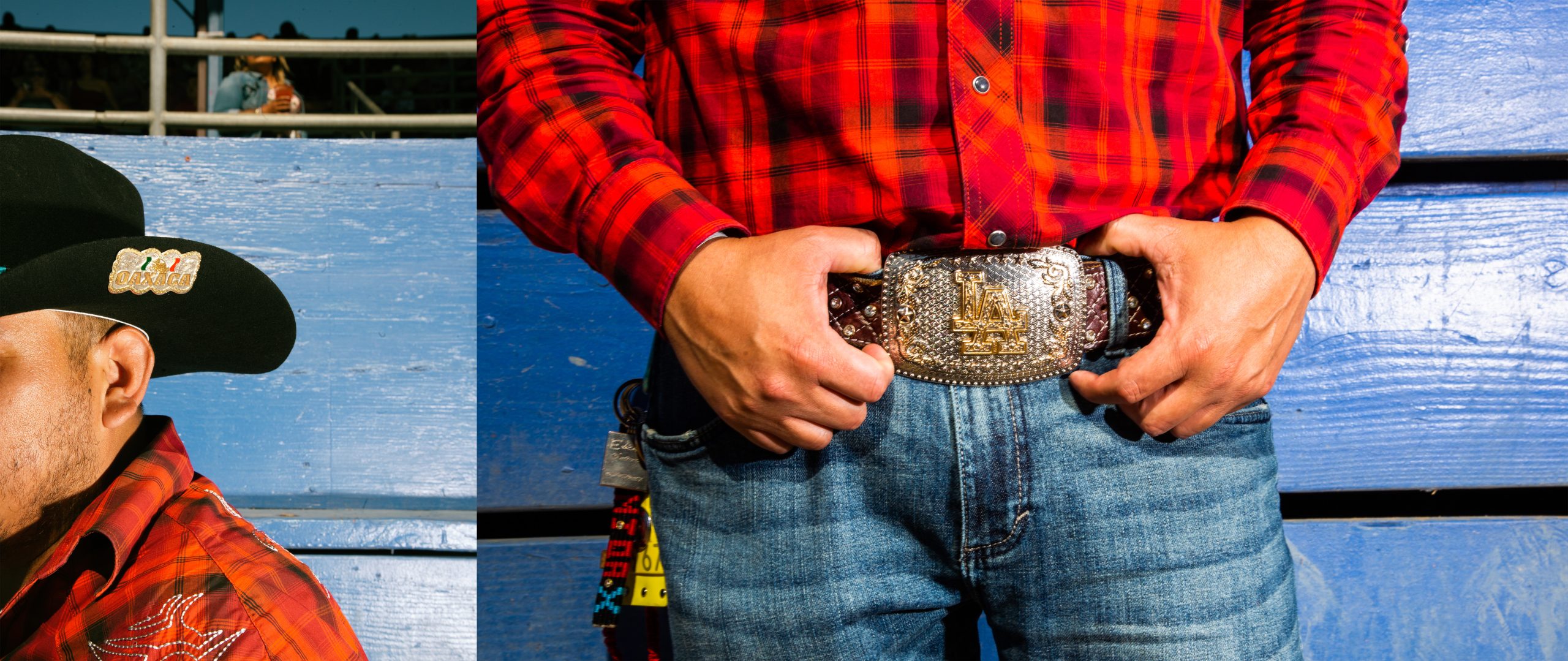
During the Pico Rivera Sports Arena jaripeo on Sunday, Sept. 5, 2021, Eliciel Quero Marquez, an immigrant from Oaxaca, sartorially combines his pride for his Mexican home state and his adopted home of Los Angeles. His ensemble consists of a vaquero shirt, LA diamond-studded belt, and a black cowboy hat embroidered with a golden Oaxacan embellishment.
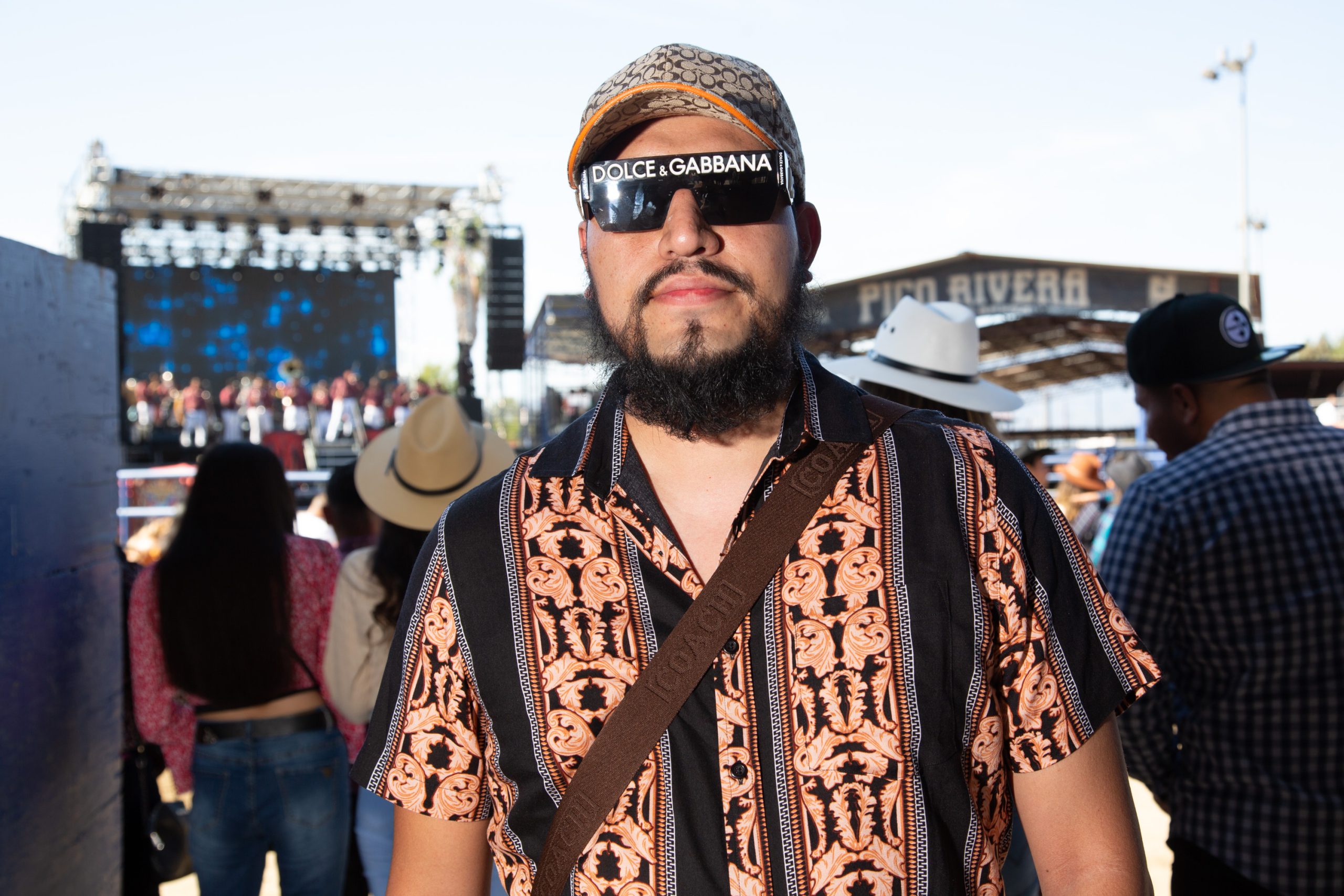
Christian Gonzalez, 28, wears Dolce & Gabbana shades coordinated with a Coach cap to beat the heat during the Pico Rivera jaripeo on Sunday, Sept. 5, 2021. Gonzalez is the proud owner of a Benihana-style catering service that he brings to the homes of famous musicians and socialites.
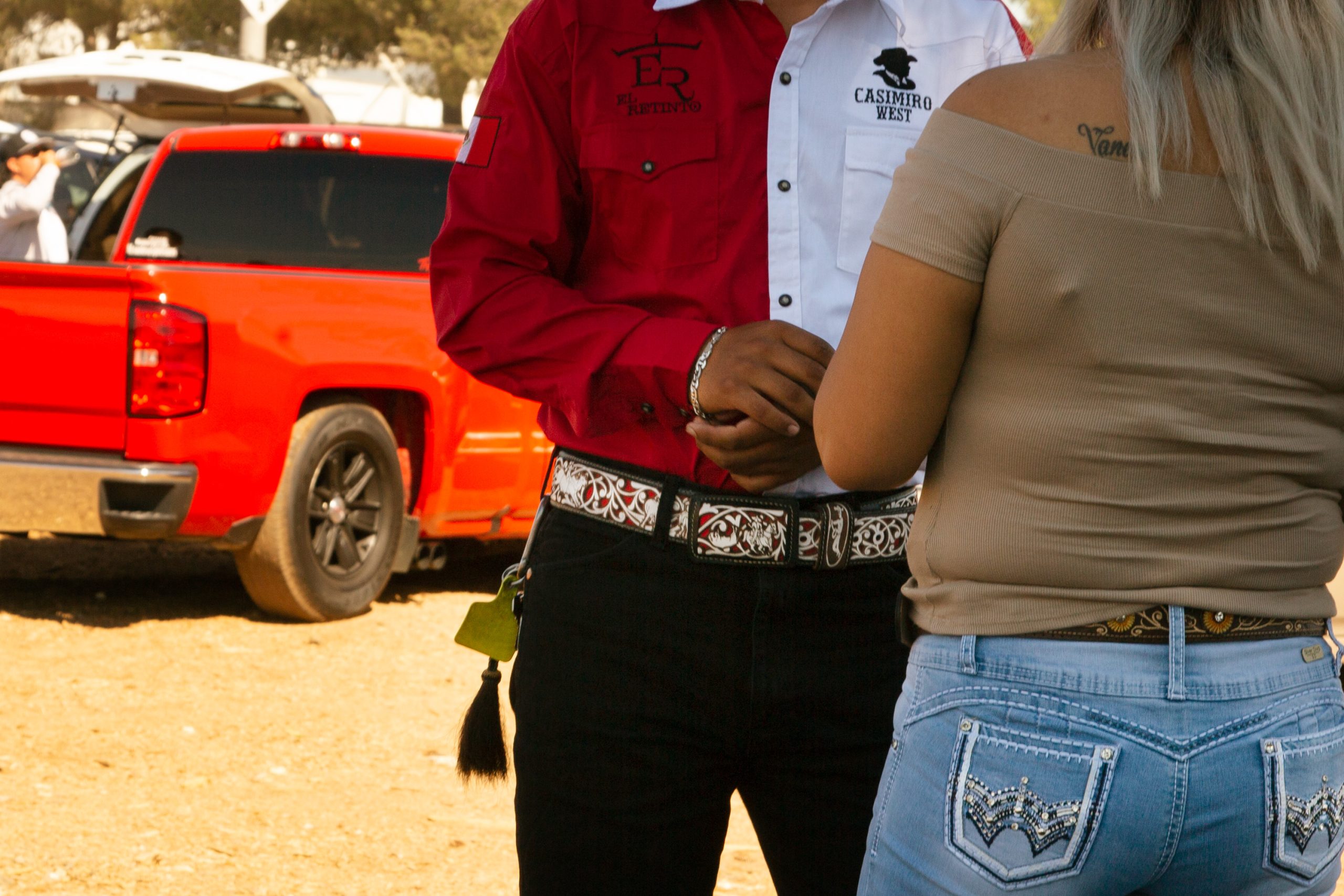
Cars pull into the dirt parking lot at the Pico Rivera Sports Arena in LA on Sept. 5, 2021.
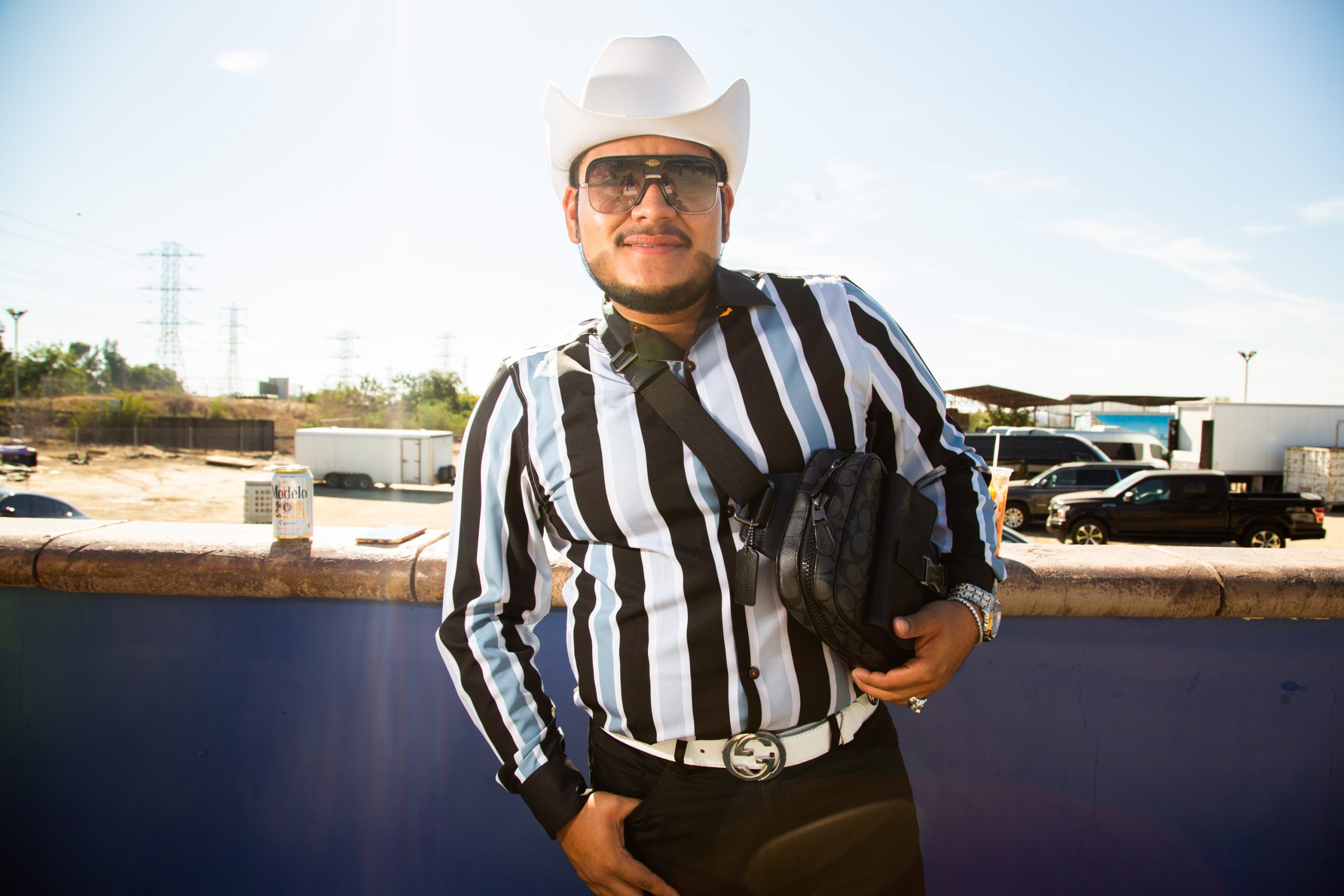
Erick Beccera, 22, is a frequent attendee of jaripeos at the Pico Rivera Sports Arena. He pauses for a photo on Sunday, Sept. 5, 2021. “I have been coming here since I was 17. The musicians that come through here inspire how I dress,” says Becerra. The outfit he wears is inspired by Gerardo Ortiz’s outfit in his music video, “Más Caro, Que Ayer.” Becerra describes his style as buchon, a style prevalent and started in Sinaloa, Mexico. He carries a Coach crossbody bag and wears Gucci sunglasses.

Jaripeos are a come as you are event, but attendees often mix streetwear with a hint of designer accessories. Siblings Sarahy and Andres Villegas demonstrate this sartorial spirit while attending a jaripeo in Pico Rivera, Calif. on Sunday, Sept. 5, 2021.
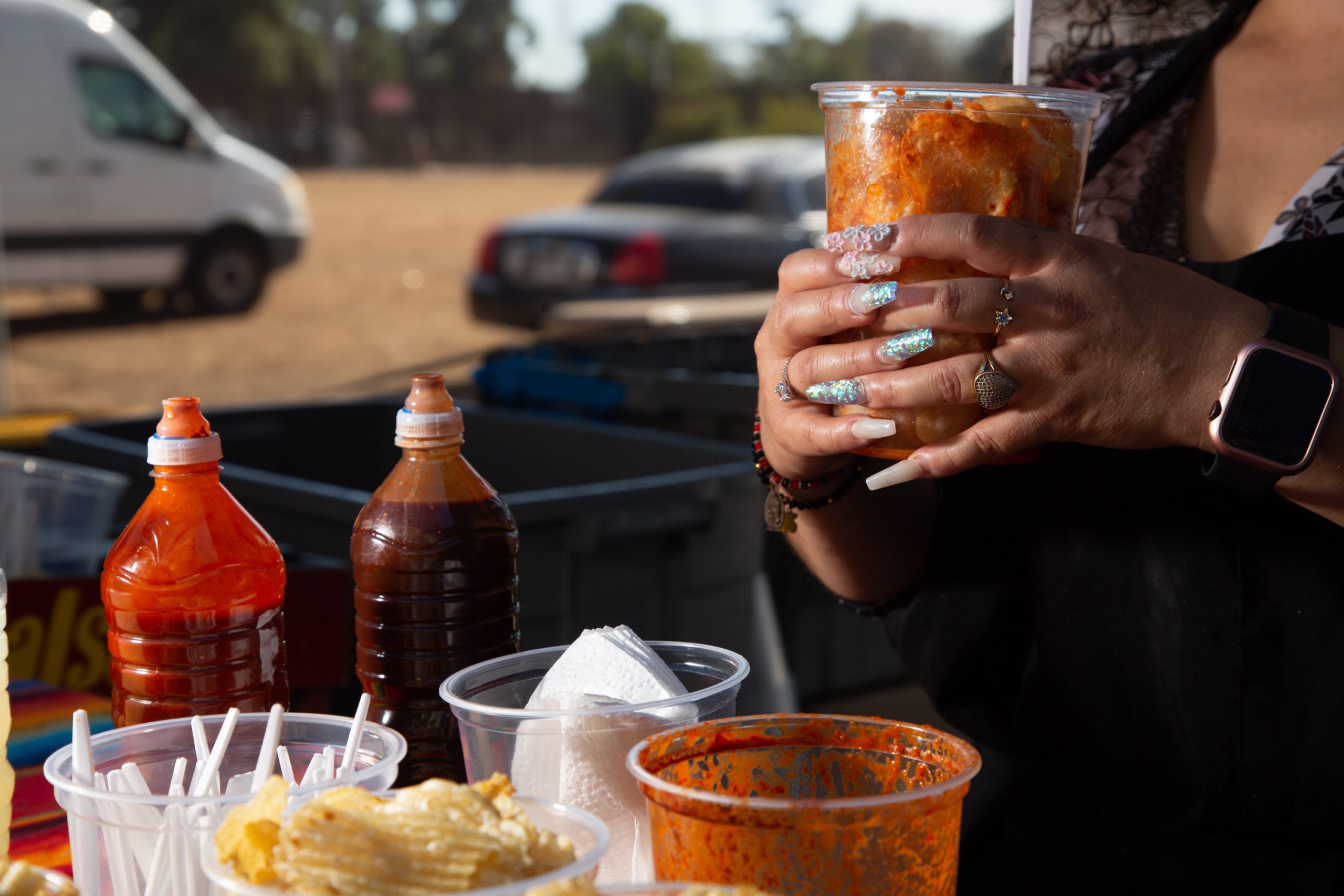
A vendor holds fried chips drenched in Valentina hot sauce and lemon juice on Sunday, Sept. 5, 2021. Her nails are long acrylics designed by her daughter.
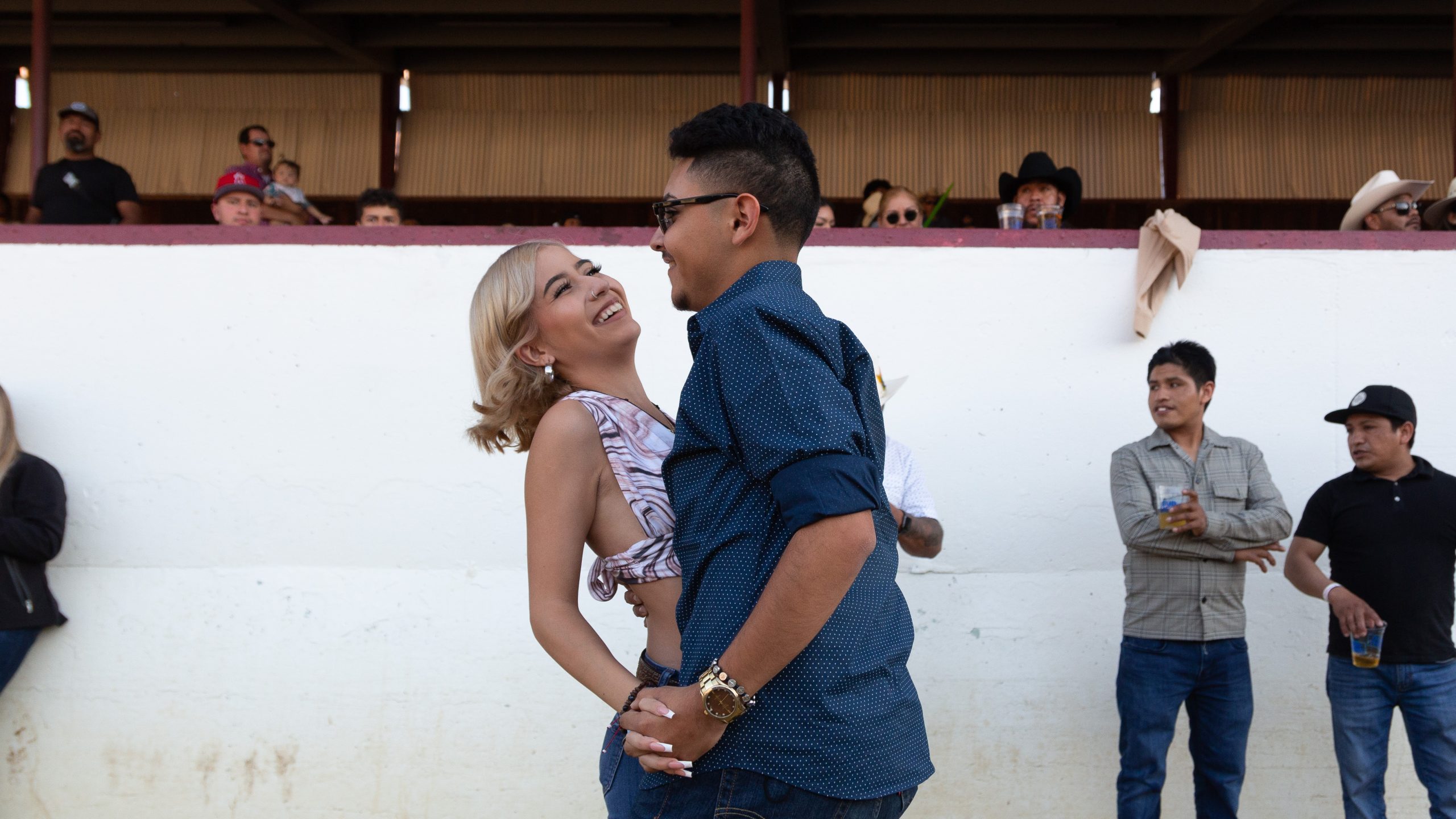
Maria Rodriguez, 19, and David Ramos, 18, dance during the Earl Warren Showgrounds jaripeo on Sunday, Oct. 3, 2021. Rodriguez shared that she dresses differently in her day-to-day life than she would at a jaripeo. Here she sports a crop top and silver earrings for the occasion.
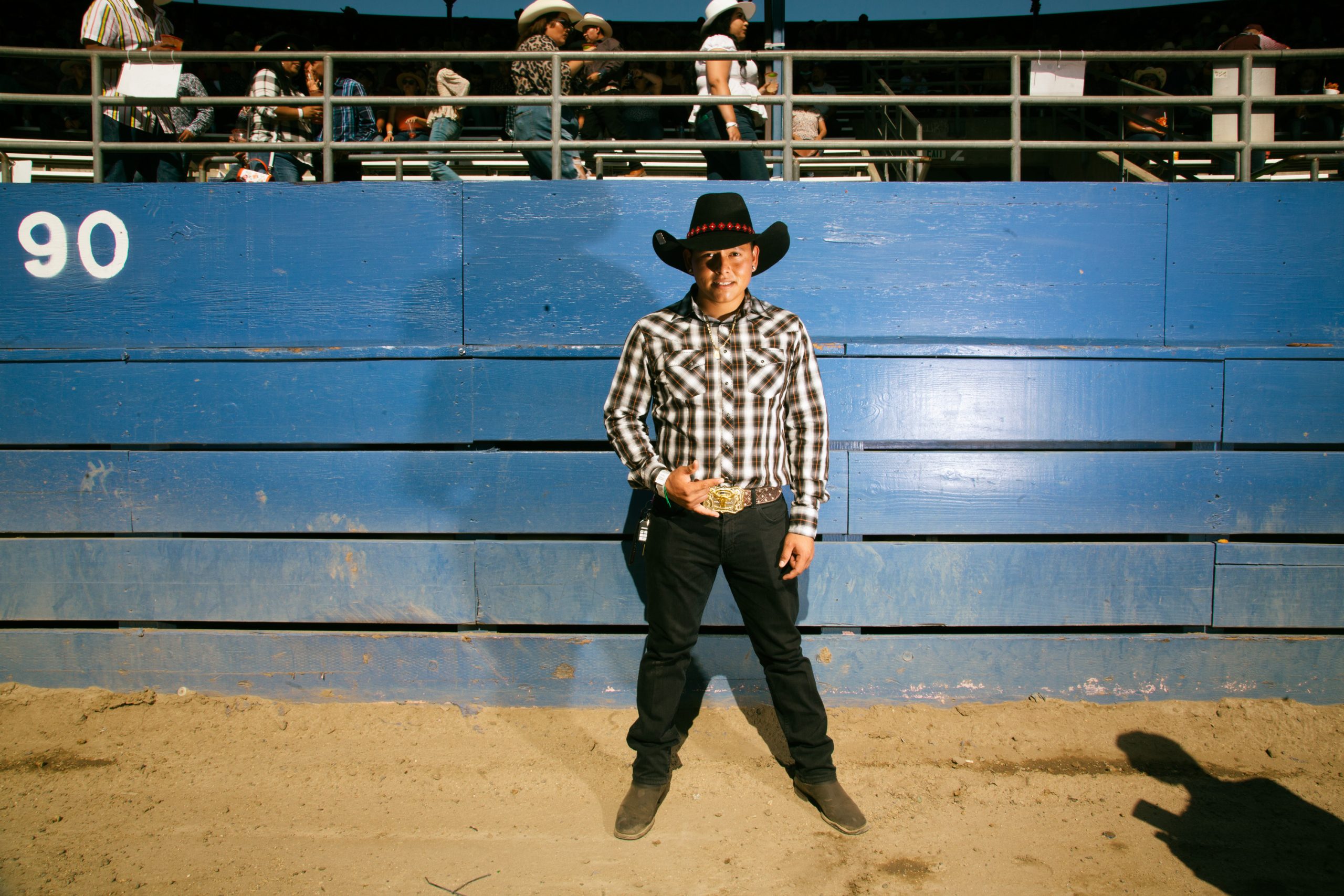
William Reyes stands confidently inside the Pico Rivera jaripeo on Sunday, Sept. 5, 2021. He attended the event with his girlfriend, friends, and family. He revealed that he enjoys dressing up with clothing that depicts his roots. For example, his cowboy hat features an embroidered patch from the Mexican state of Jalisco.
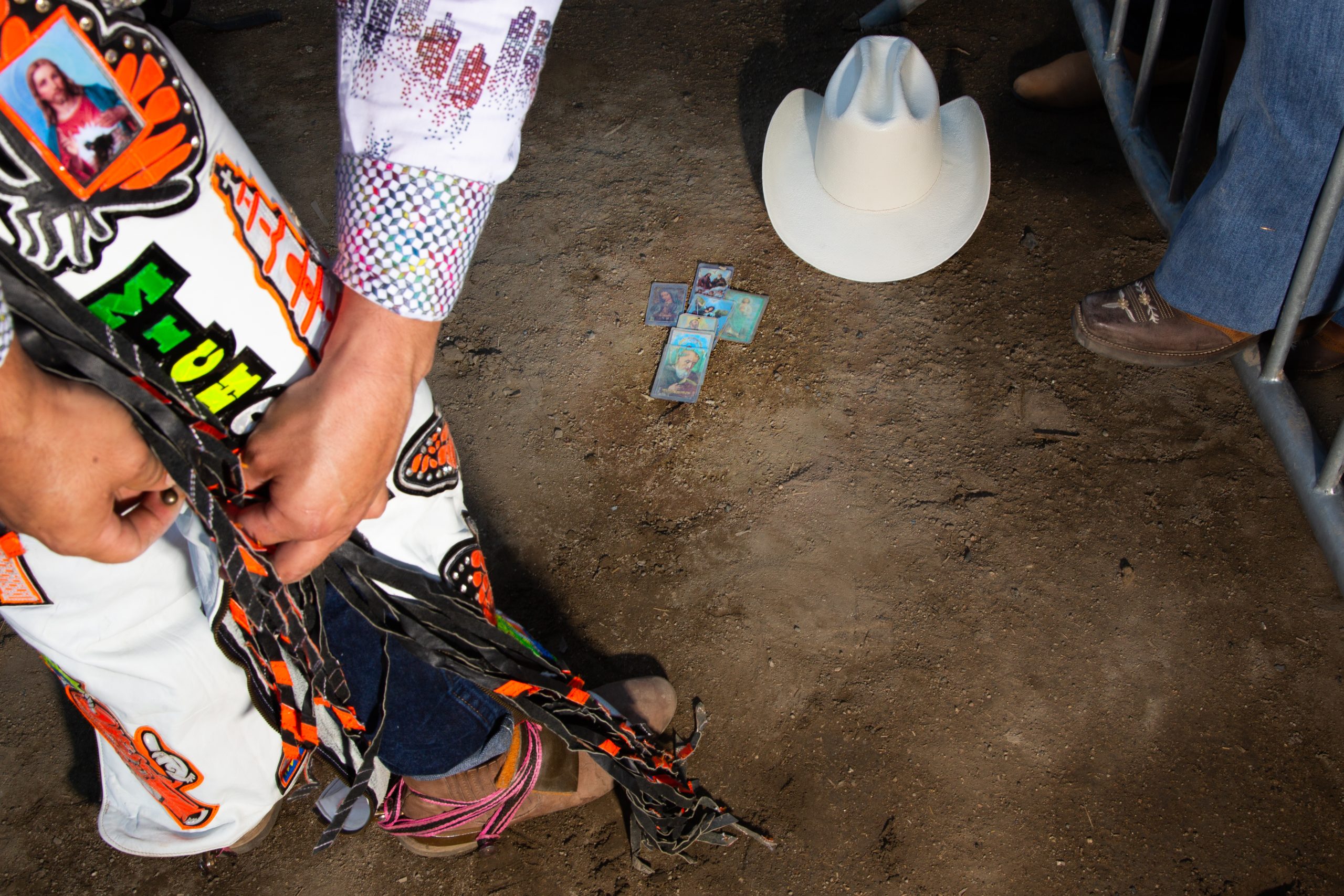
A jinate straps on protective chaps affixed with religious imagery. The rider has traveled from Mexico to participate in a jaripeo in Pico Rivera, Calif. on Sunday, Sept. 5, 2021. The prayer cards on the floor will be tucked into his pockets to protect him on what could be his last ride. He also carries one prayer card between his mouth when he rides
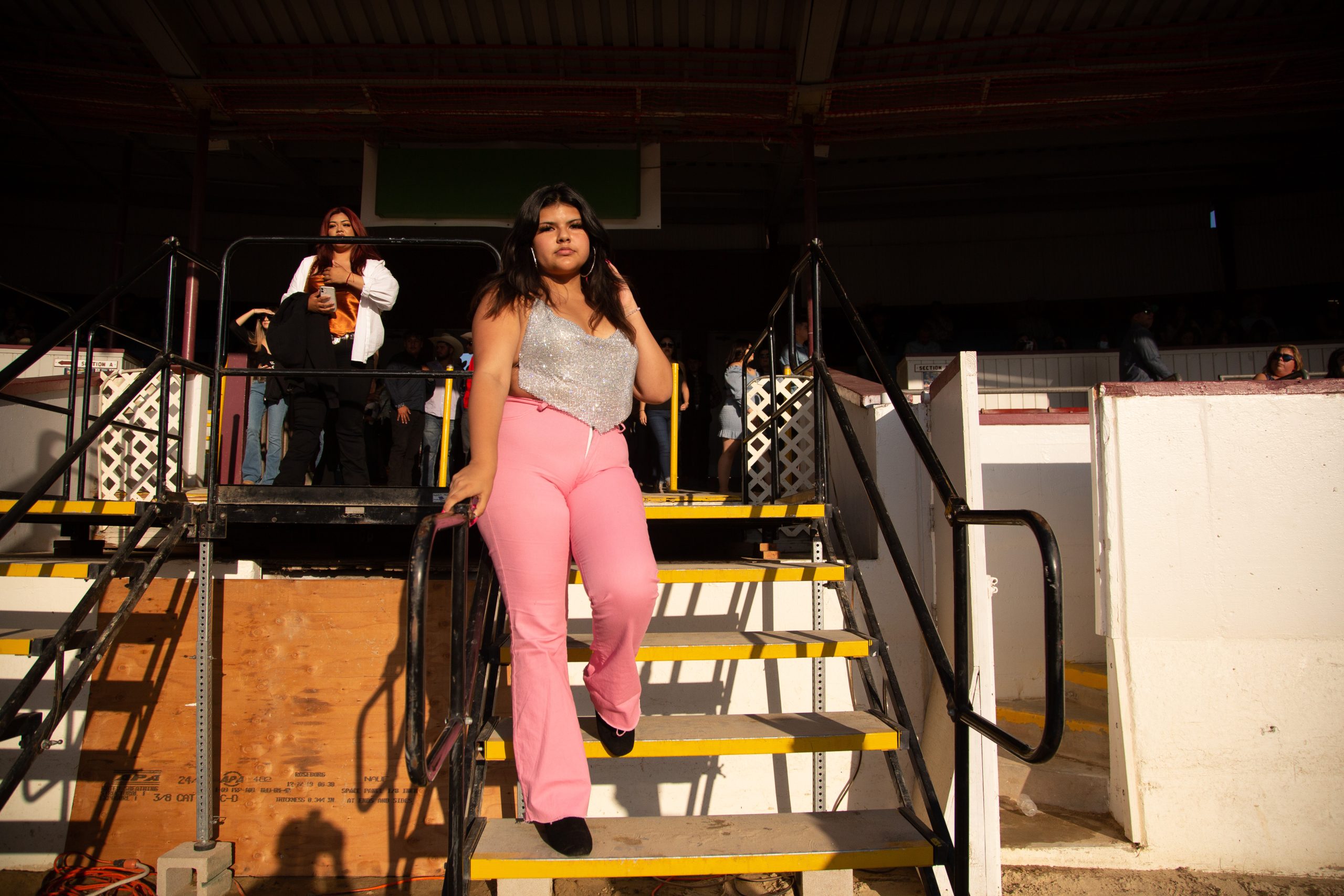
Ariana Ayala stops as she walks down the steps to the Earl Warren Showgrounds on Sunday, Oct. 3, 2021. “I like to stand out and be different. It’s not an everyday thing to be able to dress up,” says Ayala when asked about the inspiration behind her outfit.
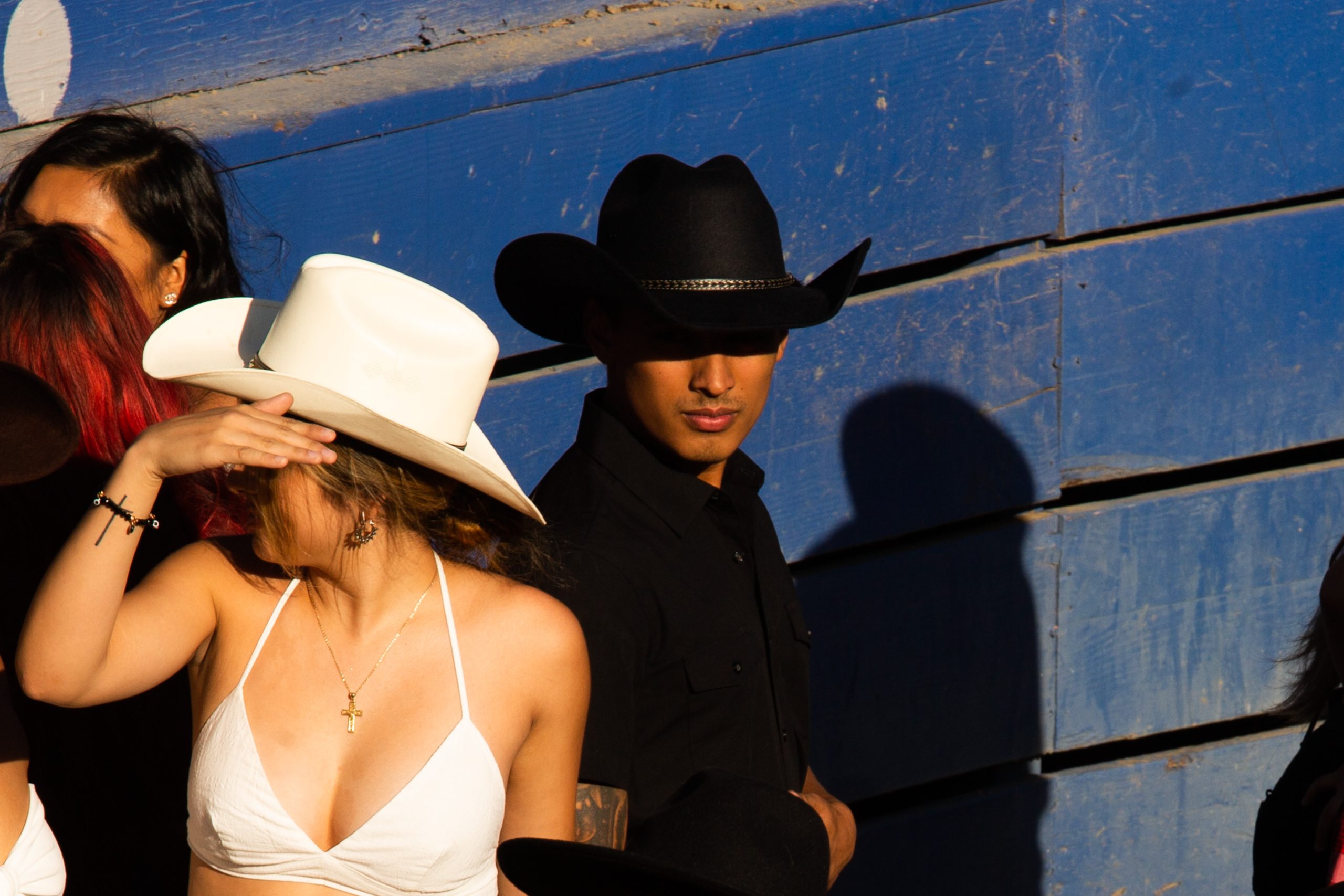
Attendees at the Pico Rivera Sports Arena jaripeo on Sunday, Sept. 5, 2021.
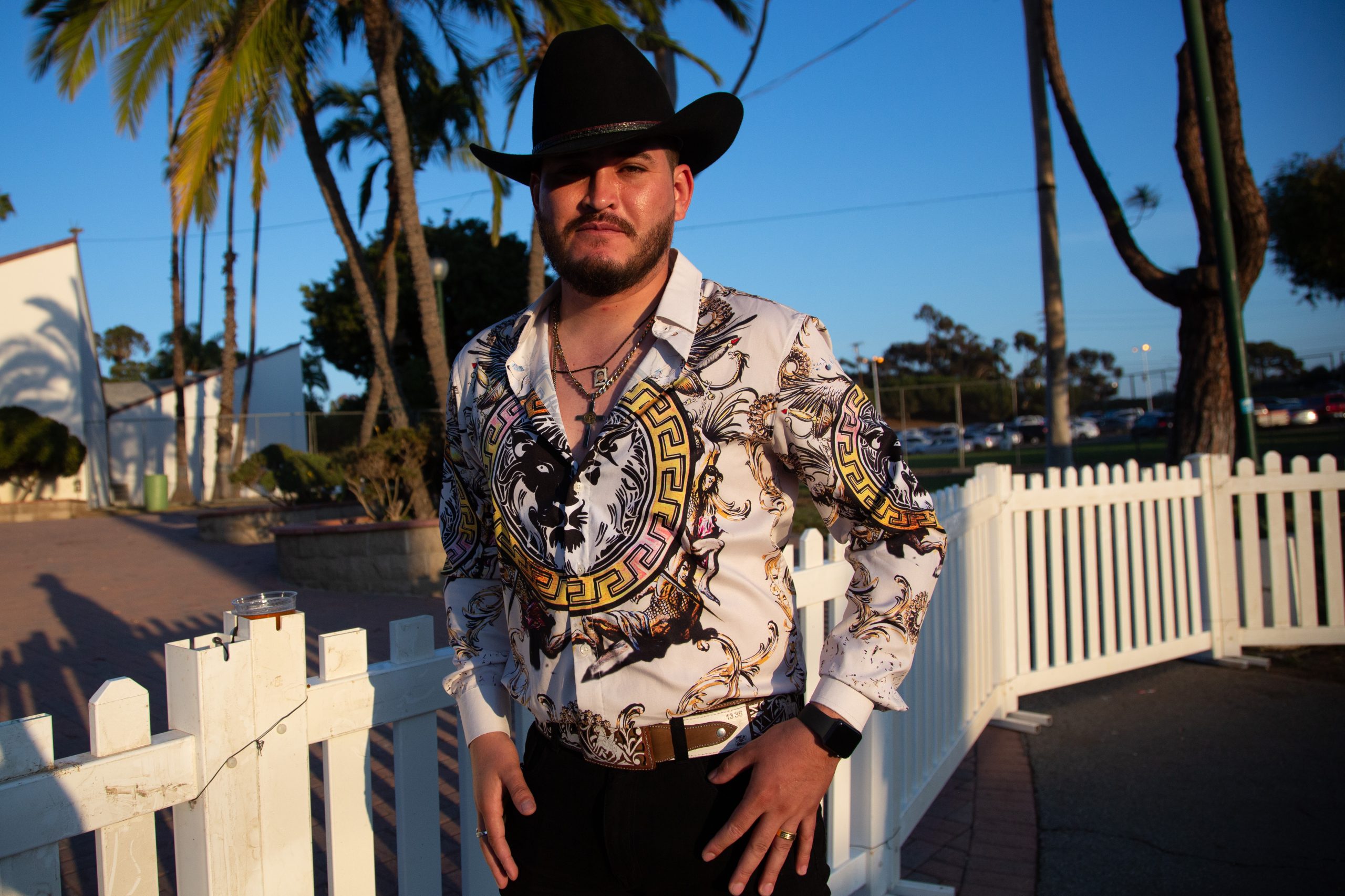
Sergio Navarro, 27, an up-and-coming singer, takes a small break from the Earl Warren Showgrounds jaripeo-concert on Sunday, Oct. 3, 2021. He wears a necklace with an image of Santo Toribio, a catholic priest killed during the Cristero War. Many migrants pray to the saint for protection when making the arduous journey across borders. Many immigrants also tell stories of encountering Santo Toribio apparitions while crossing into the United States. Navarro is a Mexican immigrant himself.
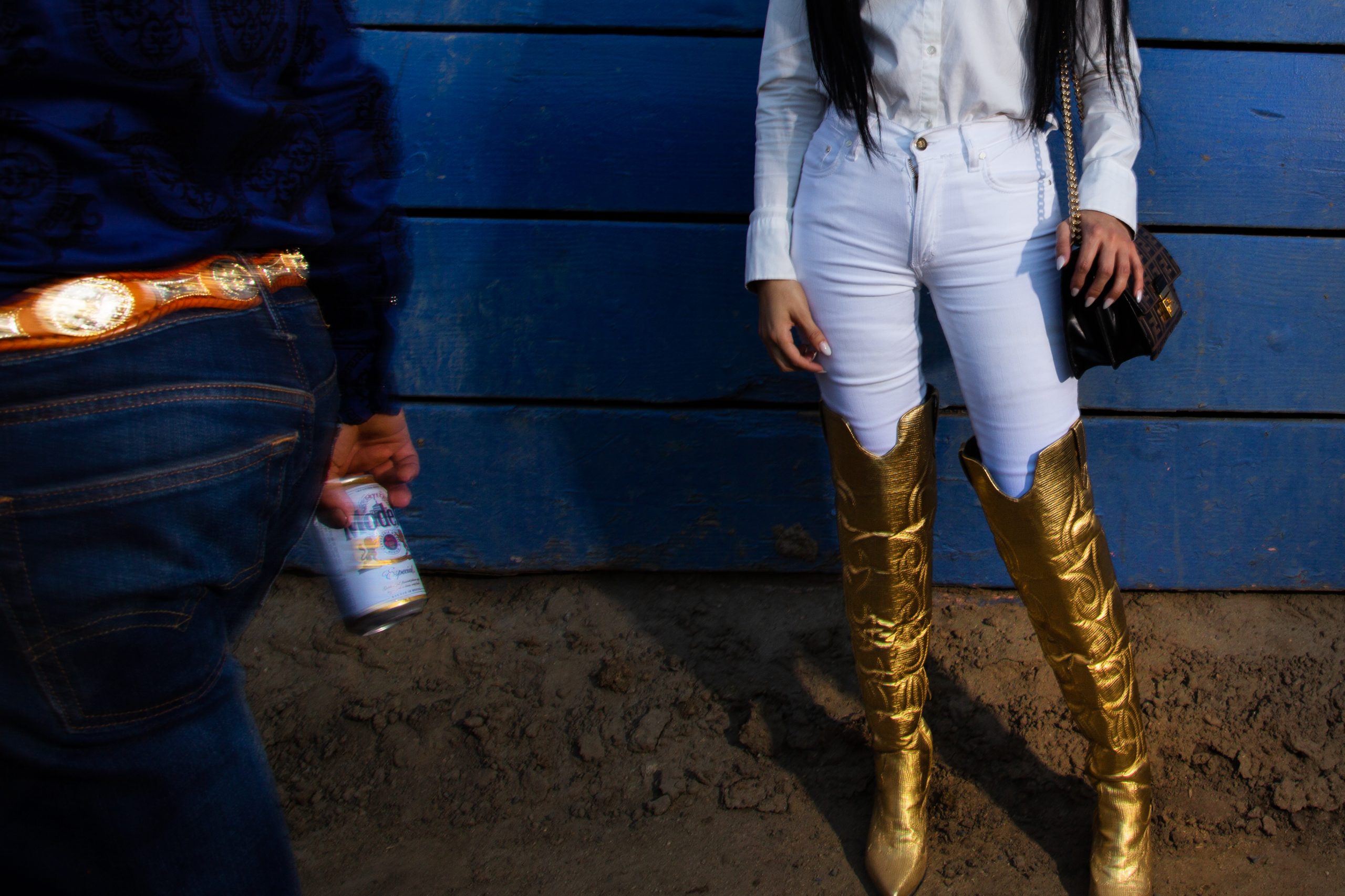
A close-up of a young woman’s showstopping gold knee-high boots. Although she was reluctant to show her face in the photograph, she was eager to show off her boots while standing and listening to banda music at the Pico Rivera Sports Arena jaripeo on Sunday, Sept. 5, 2021.


